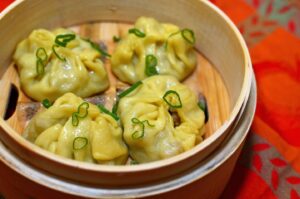
Ehe path of foreign trade is very important for the growth of our country, and especially for the food industry, since we are considered a power in that sense.
But, paradoxically, we have been exporters of primary products, but not so much of processed foods. Perhaps this time is the time to move on to the second stage, that is, exporting that raw material, but with added value.
In this sense, we must offer ready-to-consume products to the international market; something that today’s world demands more and more.
There is a market not yet explored by our country, to offer processed foods, mainly frozen, where we find in Asia, the Middle East and in some European countries, an increasingly growing demand and with great purchasing power.
A Although our country exports a variety of products, such as soybeans, oils, and beef, there is even greater potential to export products such as frozen pizzas, beef burgers, veggie products, etc.
We believe that if we can generate these exports, not only will an important income of foreign currency to the country, but also the increase in Argentine labor is promoted through the growth of manufacturing companies, since many of them would have to expand their plants to export these products to the enormous Asian market, for example, and As they say, exporting is a generator of genuine labor.
SIf we focus on a country like China, for example, we find that this Asian giant has experienced very significant economic growth and with high purchasing power in its middle class and that it currently has a more cosmopolitan life.
It is currently one of the world powers, with exponential growth and with projections of possibly being the greatest world power in the coming decades.
A traditional China with well-rooted customs coexists, but at the same time a China of the future where new generations are seeking a life more open to the West, with China today being an advanced country, where many call it “digital China.”
In the so-called coastal area of China where more than 95% of its population lives, international products have been consumed for a few years.

Ehe frozen food market constitutes a commercial segment that is growing worldwide, driven by today’s lifestyle.
Nowadays it is unthinkable to do without frozen products in the daily diet since practically all homes purchase these products.
In this sense, it is estimated that the Asia Pacific area constitutes the region with the fastest growth in the sector.
The global frozen food market is estimated to reach US$380.5 billion by 2027, with a CAGR of 4.4%.
En The specific case of China, has the largest share in the Asian packaged frozen food market.
Furthermore, as we have mentioned, its large and growing middle class population with high purchasing power, its marked modification in its eating habits and its more Western consumption, makes this market a potential buyer for Argentine manufactured products.
Frozen food distribution channels have improved greatly and that has made it easier for more consumers to access these products.
CIn closing, we can say that the market for ready-to-eat foods (frozen and dried) is highly competitive and could boost the exponential growth of Argentine companies, improving their profitability, expanding their production plants, generating more genuine employment and promoting innovation. in companies to meet the demand for these products worldwide

José María Otamendi is Partner & CEO at Global Trading Bridge, a company that exports and distributes processed food products from Argentina to the world, focusing on China and Hong Kong. He exports products made with “added value” in Asia and other European countries, focusing on those products that have an international concept.
Source: https://reporteasia.com/opinion/2024/05/28/exportar-con-valor-agregado/

